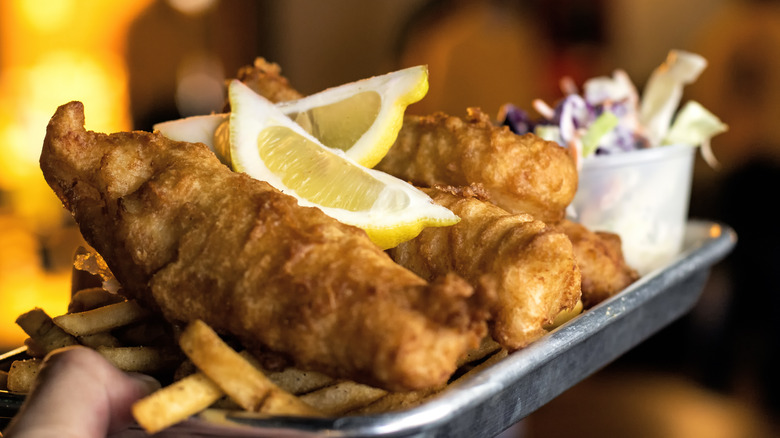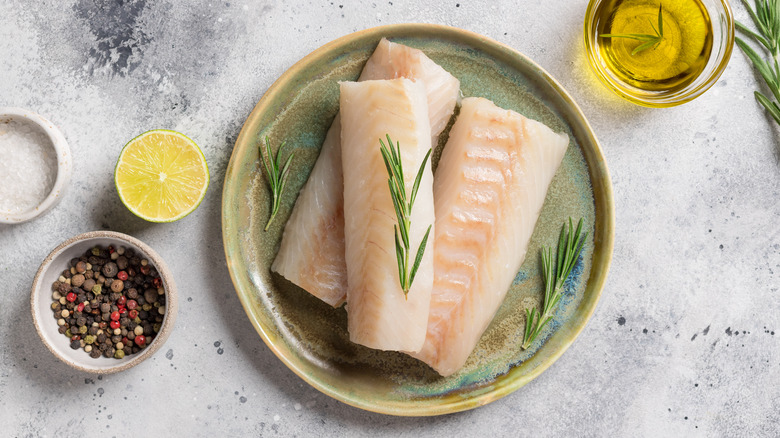Fresh Is Always Best When Making Fish And Chips. Here's Why
Fish and chips is a deceptively simple dish. On the surface, it only consists of fried fish and (what we in the U.S. call) french fries — which makes it sound like a foolproof meal to whip up at home. While it's not too difficult, it does take some finesse to get fish and chips right, especially if it's your first time making it. Along with tasty fries, you'll want succulent yet flaky fish in a golden, crispy coating. Thanks to John Warr, executive chef of Radisson Blu Mall of America and FireLake Cocktail Bar & Grill, we know just how you can pull off the latter.
While there's a time and a place for using frozen fish, it's not when you're making fish and chips. In this case, Warr recommends sticking with fresh filets. "The issue with using frozen fish is it contains water, and that water tends to come out in the frying process, so the coating doesn't adhere to the fish as well," the chef told Tasting Table. When filets are frozen, their moisture can turn into ice crystals, which then morph into water again when you defrost your protein. And as we know, liquid is the nemesis of crispiness. If your fish is too wet, you'll end up with a soggy, and decidedly unsatisfying, coating that could slide right off.
Keep your filets dry and crispy
When choosing your fresh fish at the store, you'll want to get filets that hold up well to frying. Haddock and cod are the classic options for this dish, but you can also try tilapia. Pick slabs that only have a slightly fishy smell with no sour odor, and that feel firm to the touch. Your filets also shouldn't have any dark or dry spots. Once you take them home, you'll want to keep them in the fridge and cook your dish within two days to prevent the fish from going bad.
Once it's time to fry, take the appropriate measures to keep your final product crispy. Always pat your filets dry with a paper towel before coating them in your flour and batter, and make sure your oil is nice and hot. It should reach between 350 and 375 degrees Fahrenheit before you dunk your protein in the pan — anything less, and your final product may turn out soggy. Once everything is sizzling, cook your filets in batches to avoid overcrowding the skillet, as this can lower the oil temperature and cause mushiness too. But as long as you start off with fresh fish instead of frozen, you're already well on your way to a crispy and satisfying dish.

